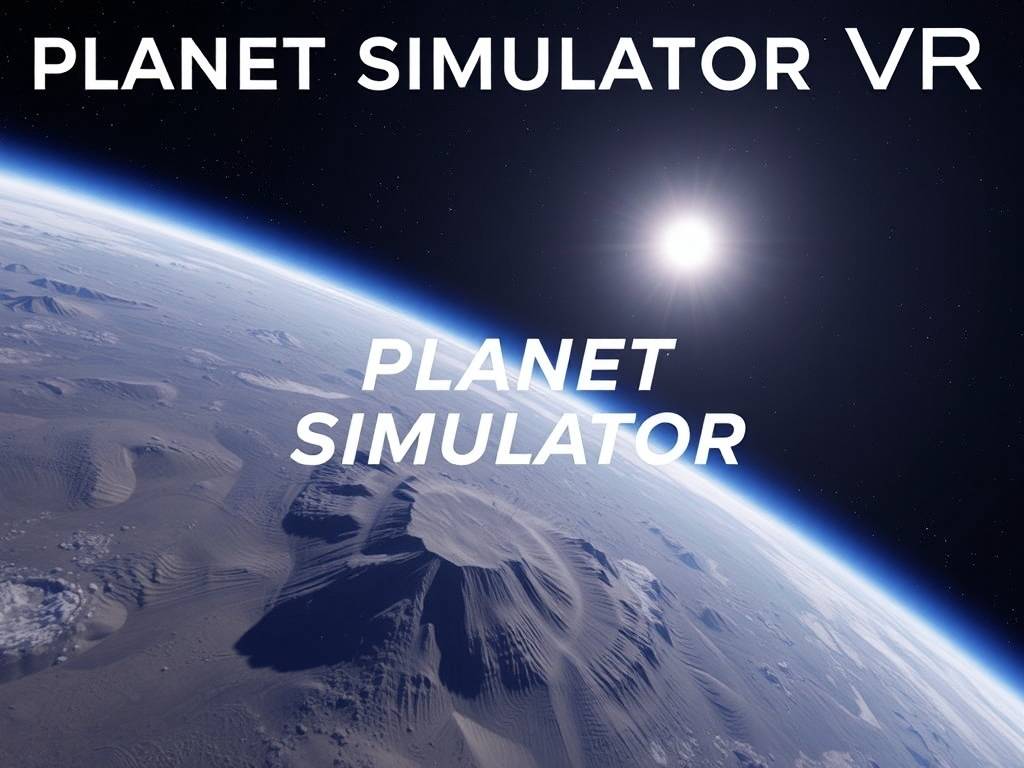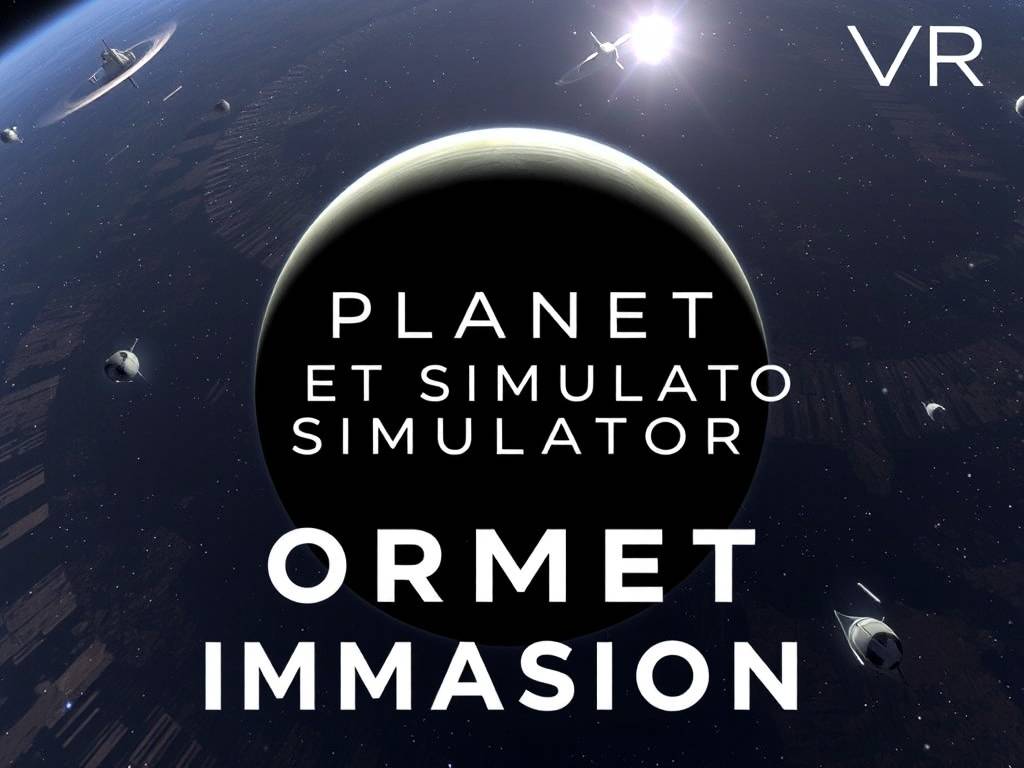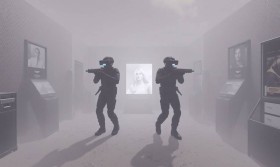Beyond the Horizon: Planet Simulator VR's Orbit Missions DLC Redefines Cosmic Exploration
For years, Planet Simulator VR has stood as a monument to planetary-scale engineering. Players have sculpted atmospheres, redirected rivers, and terraformed alien worlds from the ground up, wielding god-like power from the surface. But a fundamental question always lingered in the cosmos above: What lies beyond? The newly released Orbit Missions DLC doesn't just answer that question; it explodes the very scale of the game, shifting the perspective from a planetary architect to a master of orbital mechanics and a guardian of a fragile celestial ecosystem.
A New Vantage Point
The most immediate and breathtaking change is the shift in perspective. Where the base game had you looking down, the DLC has you looking out. Donning your VR headset, you are no longer a grounded entity but a presence in the great void. Your first mission typically places you aboard a rudimentary space station, its large observation windows framing the magnificent, swirling marble of the world you once walked. This is not just a visual upgrade; it's a profound psychological shift. The planet is no longer a canvas to be painted on, but a complex, dynamic system that you must now interact with from a distance. The silence of space, punctuated only by the hum of life support, creates an atmosphere of intense, focused isolation.
The core gameplay loop evolves dramatically. Instead of manipulating terrain, you are now managing orbits, trajectories, and delicate orbital infrastructure. The Orbit Missions DLC introduces a suite of new tools and interfaces designed specifically for zero-gravity and orbital physics. Your primary interface becomes a holographic orbital map, displaying the intricate paths of satellites, space stations, and debris fields. The challenge is no longer about brute force, but about precision, timing, and a deep understanding of celestial motion.

The Mission Architect: From Maintenance to Mega-Projects
The DLC structures its content through a series of increasingly complex mission chains, categorized into several key pillars:
- Orbital Maintenance and Construction: These are your introductory tasks. You might be tasked with deploying a new communications satellite, requiring you to calculate its transfer orbit from your station and carefully release it. Later, you'll assemble large structures like solar arrays or scientific observatories module by module, using a specialized construction drone. A single miscalculation can send a multi-million credit module spiraling off into a useless orbit, teaching you the value of patience and planning.
- Scientific Research and Exploration: This pillar taps into the wonder of discovery. Missions involve deploying telescopic arrays to study distant nebulae, launching probes to analyze the composition of nearby asteroids, or managing a network of weather satellites to predict global storm patterns on the planet below. The data you collect often feeds back into the base game, unlocking new terraforming options or revealing hidden planetary secrets.
- Orbital Debris Management: This introduces a critical strategic layer. Decades of (simulated) space travel have left the planet's orbit cluttered with defunct satellites and spent rocket stages. These pose a catastrophic threat to your active assets. You must pilot a capture vehicle to rendezvous with fast-moving debris, safely de-orbit it, or tractor it into a designated graveyard orbit. It’s a tense, high-stakes game of cosmic janitor that highlights a very real-world problem.
- Planetary Defense and Large-Scale Engineering: The end-game content is truly spectacular. Imagine constructing a massive orbital ring to facilitate space elevators, or deploying a network of solar shades to combat runaway global warming on the surface. The most ambitious missions involve defending the planet from incoming threats, such as a large comet on a collision course. This requires coordinating a fleet of spacecraft to nudge the object onto a safe path—a heart-pounding sequence that feels ripped from a sci-fi blockbuster.
A Seamless Cosmic Dance
What makes the Orbit Missions DLC truly exceptional is its seamless integration with the base game. This isn't a separate mode; it's a new layer of gameplay that directly influences the old. The satellites you deploy can boost your communication network, speeding up research on the surface. The orbital solar shades you build can directly lower planetary temperatures. Conversely, a volcanic eruption or a massive hurricane on the surface can create atmospheric drag or send debris into orbit, creating new problems for you to solve above.

This creates a dynamic feedback loop. You might start a session on the surface, triggering a massive geo-engineering project, then switch to your orbital perspective to deploy the necessary infrastructure, and finally return to the surface to monitor the effects. The planet and its orbit become a single, interconnected simulation, making you feel like you are managing an entire world-system, not just a rock in space.
The VR Advantage: Feeling the Void
While a non-VR version would be impressive, the DLC is fundamentally designed for virtual reality. The sense of scale is unparalleled. Leaning into a station window to watch a thunderstorm rage across a continent below is a humbling experience. Using your motion controllers to manually grapple a spinning piece of debris requires a physical deftness that a mouse and keyboard could never replicate. The audio design is crucial here—the absolute silence of space, broken by the metallic clunk of a docking port or the faint hiss of your thruster jets, grounds you in the reality of your precarious position. The VR interface, with its holographic menus that you physically swipe through, makes you feel like a true astronaut-scientist.
Conclusion: The Final Frontier is Now Open
The Orbit Missions DLC for Planet Simulator VR is more than a simple expansion; it is a fundamental and masterful evolution of the game's concept. It successfully transplants the core themes of creation, management, and consequence into the unforgiving realm of orbital space. By forcing players to think in three dimensions, master physics, and manage a fragile network of assets, it delivers a deeper, more sophisticated, and infinitely more awe-inspiring experience. It transforms the game from a planetary simulator into a full-fledged solar system simulator, proving that the greatest adventures often begin just beyond the atmosphere.
Tags: #PlanetSimulatorVR, #OrbitMissionsDLC, #VRGaming, #SpaceSimulation, #OrbitalMechanics, #VirtualReality, #GameReview, #SpaceExploration, #PCVR, #SciFiGames


















